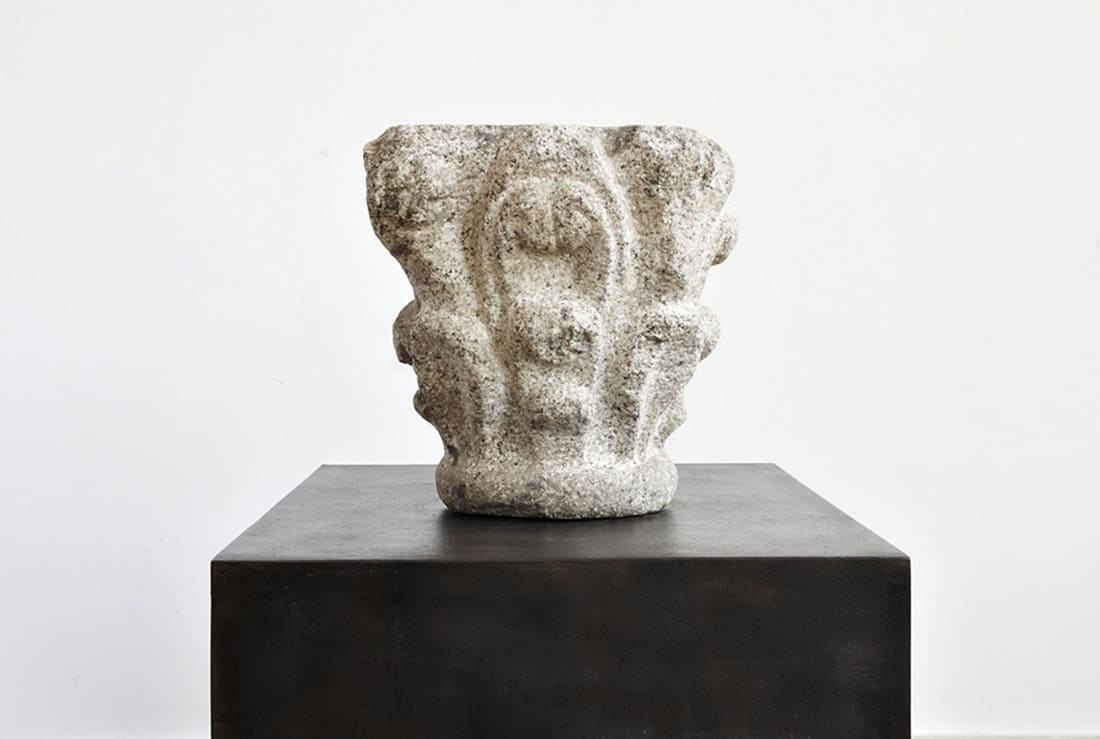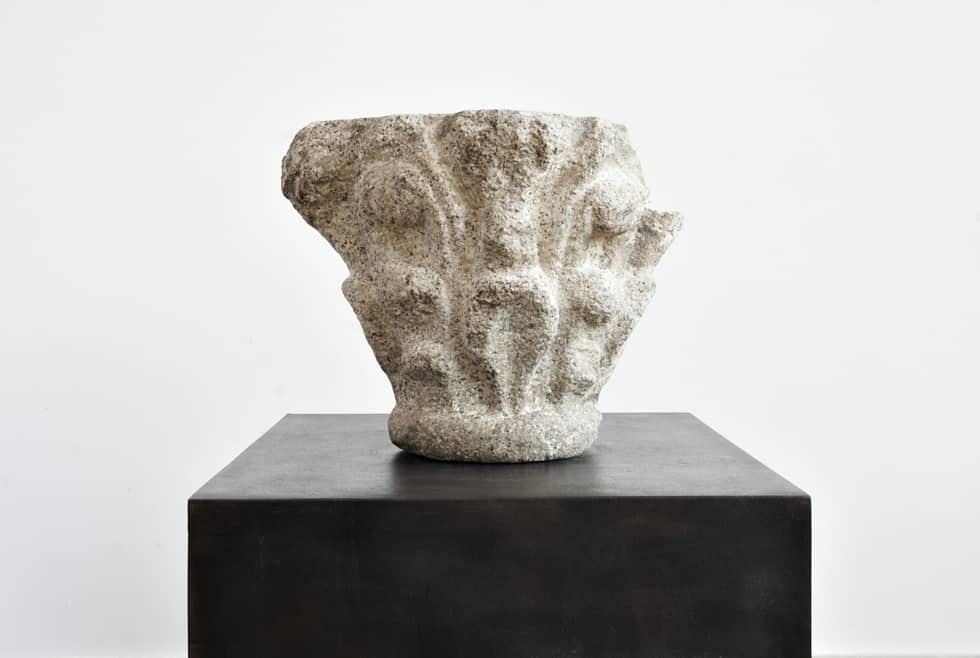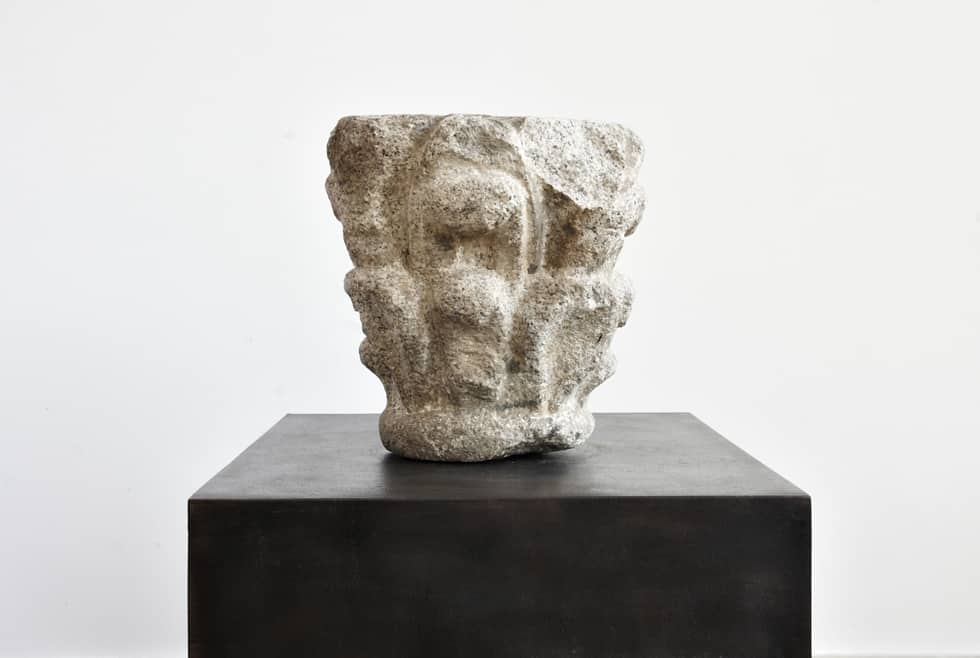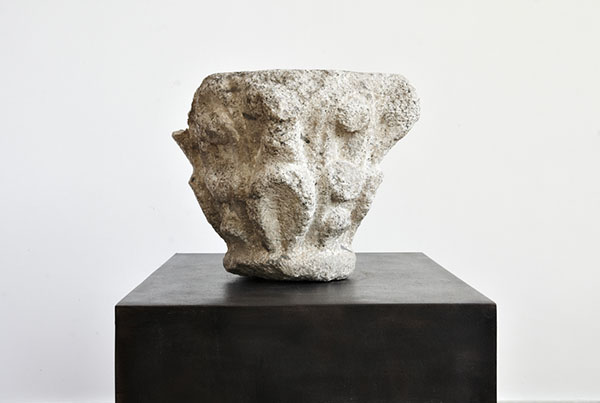CAPITAL ROMANESQUE
12-13th century

Roman examples
During the Romanesque period , ca. 1000-1300, capitals followed Roman examples, still to be seen in many antique structures. Old capitals were highly prized as antiques, collected and reused in romanesque architecture. New is the appearance of little creatures, humans and animals, hidden in the stylised acanthus foliage. Sometimes moving scenes from daily- or biblical life appear next to grotesque fantasy figures, referring to good and evil. The stone used for sculpting the capital (granite or limestone) is to some extent determinative for the stonemasons possibilities and result.
Pyrenees
Robust granite capital carved in the round with stylised Roman Corinthian acanthus leave. From the moulded base strongly abstracted foliage -with open rounded forms- runs up to the corner crocket bud. This capital vigorous carved in granite suggests that it would have been seen from some distance and was produced in the Pyrenees. Traces of possibly original polychromy visible. The mica fragments in the non polychromed parts of the stone react with candlelight.
Surface wear, damages, and some losses.



CAPITAL ROMANESQUE
- Romanesque/Gothic
- 13th century
- Pyrenees
- Granite
- H. 32 cm